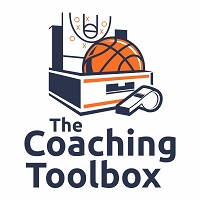
This list is from 100 things I’ve learned from coaching at the college level
By: Phil Beckner, former Boise State Assistant Coach
This is the third part of three parts of this project.
Here is the link to Lessons 1-37 from this same article
Here is the link to Lessons 38-66 from this same article
Basketball:
67) It hard to make time to work on situations but always keep your last second plays the same and have them rehearsed regularly
68) Keep your ballscreen defense simple. Have a game plan, but be ready to adjust
69) When you plan to “hedge” ballscreens, bigs want to “hide” behind the screener and then jump out to hedge—teach “inside hand to screeners outside hip” This allows bigs to show chest and not be late on the hedge
70) Have a plan for FT blockouts. Where you put each guy and which side you double with.
71) If you play man and zone during games and you’re not sure which is best, ask players how they want to guard- it keeps them aggressive, and it puts it on them! They buy in to guarding more!
72) Penetrate and kick is the best offense in college basketball
73) If you are a set play team and do not want to “dummy” every set during practice then emphasize A) Great pace and B) Great Screening
74)If your post players aren’t great at scoring at the block: “cut and fill” instead of “stand and space” keeps the help defenders occupied w/movement
75) Do not let players throw back on a 2on 1…most times it ends up as a charge!
76) Take 2 to 3 min to emphasize a core principal when warming up. We closeout, and stay down on shot fakes before we shoot in post/perimeter EVERYDAY.
77) In scouting: players care more about opponents personnel than the actions the team is running. They will remember other player’s tendencies because they want to be better than that player! Be detailed about this.
78) Practice “bluffing” or “stunting” (quick/fake help) every week in a variety of ways/situations. Players will start to see more opportunities to do this during live action.
79) Some of the best UOB actions have multiple options once the ball is thrown in (double screen, single double, etc)
80) It’s important to drill defensive principles/defensive actions every day! “Practice what you emphasize”
81) 3 keys to be in every game: transition defense, rebounding, turnovers!
82) Work on transition defense everyday…our mindset is: “we run-they don’t”
83) “Simple plays are great plays”…you don’t need a homerun to be successful
84) Work on blockout situations: it is the end of the shot clock and bigs have had to help on penetration, who blocks out who? (Situations: scramble mode, switching screens, transition, etc.)
85) You have to DRILL “help the helper” all year long. It has to become habit and instinct. Drill it in a variety of ways.
86) Teach players every detail for your sets. They need to know exactly what you want, when you want, and where you want! (screening, cuts, passes, operational area’s, timing)
87) Going for shot fakes will result in points or fouls almost 90% of the time.
88) “Shooting Passes” against a zone are a must. Make sure players are throwing passes players can shoot off of, you can’t have a poor pass take a guy out of a shot.
89) Look for common “themes” in scouting opponents. Use this for team prep. Players understand it better, and will identify the “giveaways” ex: dribble lead to wing: screen under/screen down, a guard sitting at the block: stagger screen action, last 15 seconds of shot clock: random ballscreen
90) When guarding motion: tell players to engage in the entire action, not just guarding their man
91) Post players need to be “active defenders”. Do more than one thing in a possession! ex: hedge ballscreen, recover to man, bluff help on penetration, discourage post entry pass, then box & rebound!
92) Rebounding-the more you chase the more you get.
93) Post Players can not just watch the shot go up while getting back in transition defense, teach them to box the players running into offensive glass-this is where we give up a lot of offensive rebounds!
94) Teach “ready for the next play” do not let players stand after passing, SPACE for the “next play”. This is harder to guard, and gets players more shots.
95) Find common terminology for your entire staff and players to use. Different terms/teaching points can result in confusion.
96) Have a counter play or 2nd option for your best play
97) Make sure to have a “come from behind” plan. Even if you are not a pressing/trapping team, you have to have something for the last 2 minutes if you are behind.
98) Individual workouts: It’s a great time to send the same message your head coach tries to send to specific players. Ex: driving the ball more vs. shooting more, shot selection for shooters, finishing w/the weak hand etc.
99) Practice and emphasize “game changing plays”. Ex: Taking a charge, Offensive rebound kicked out for 3, chasing down a wide open lay-up, offensive rebound at the FT line. FIND momentum changers!!!
100) Always look for a new “competitive” drill (keeping track of time or score) late in the season. It helps keep practice fresh and players look forward to it.
Thanks for sharing Coach Beckner!
Here is the link to Lessons 1-37 from this same article
Here is the link to Lessons 38-66 from this same article
The Coaching Toolbox has hundreds of resources for basketball coaching including basketball practice, basketball plays, basketball drills, basketball quotes, basketball workouts, basketball poems, and more!







Great information and very useful. Sometimes you forget some of these points and its good to hear them being repeated. Coaching is the process of continuous improvement.